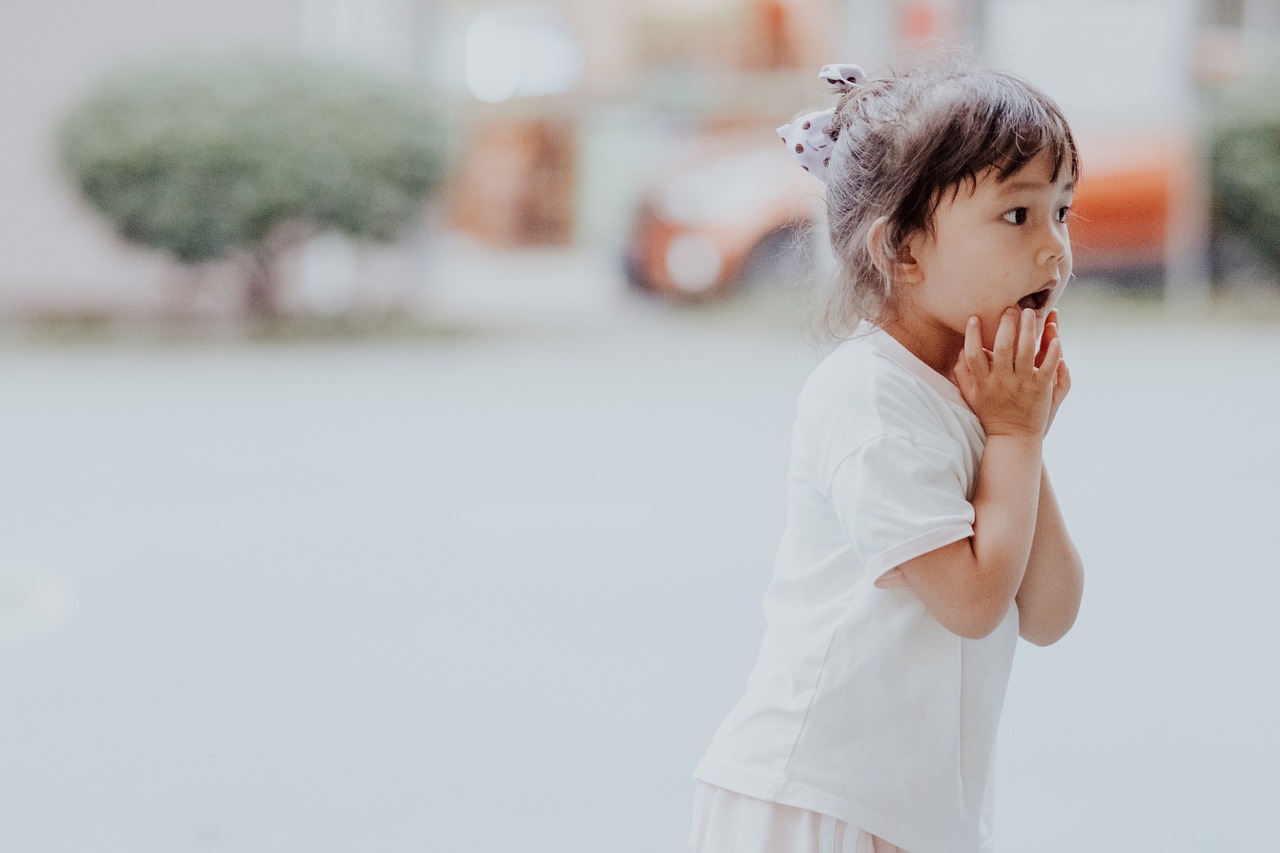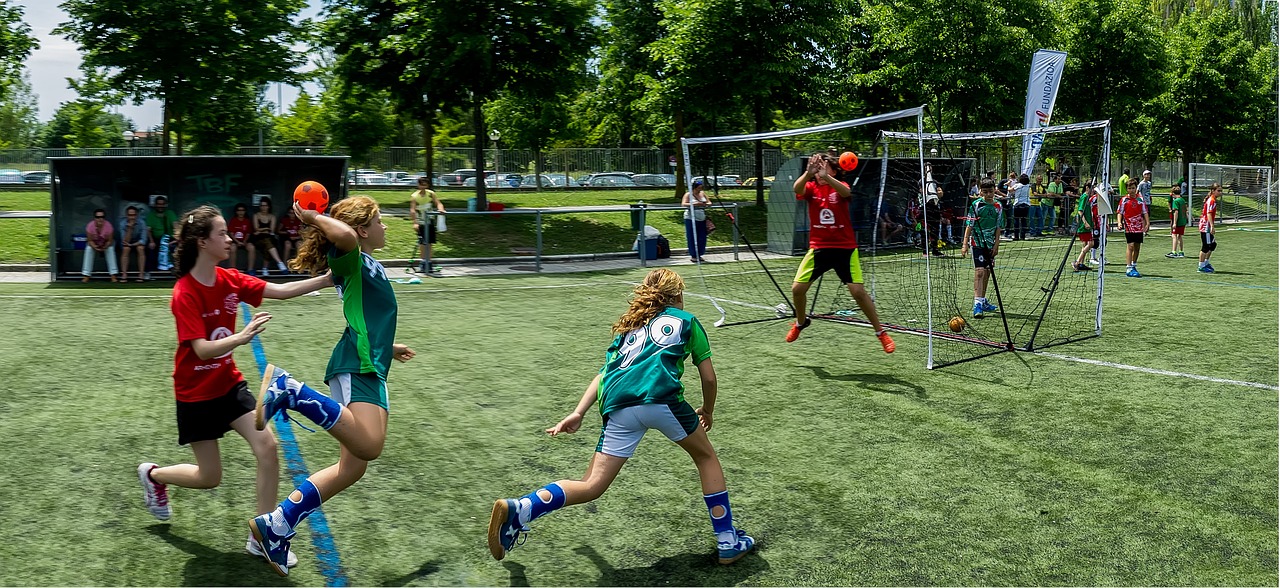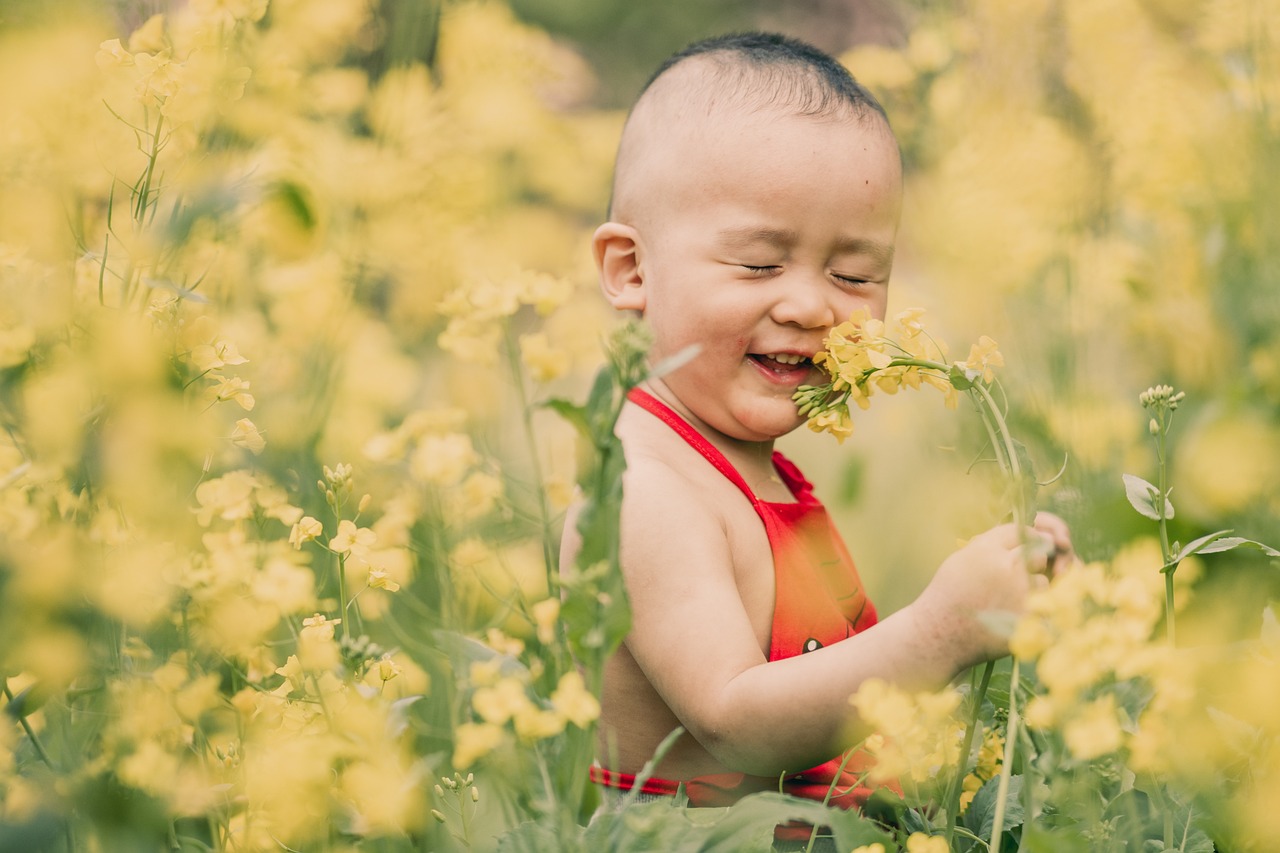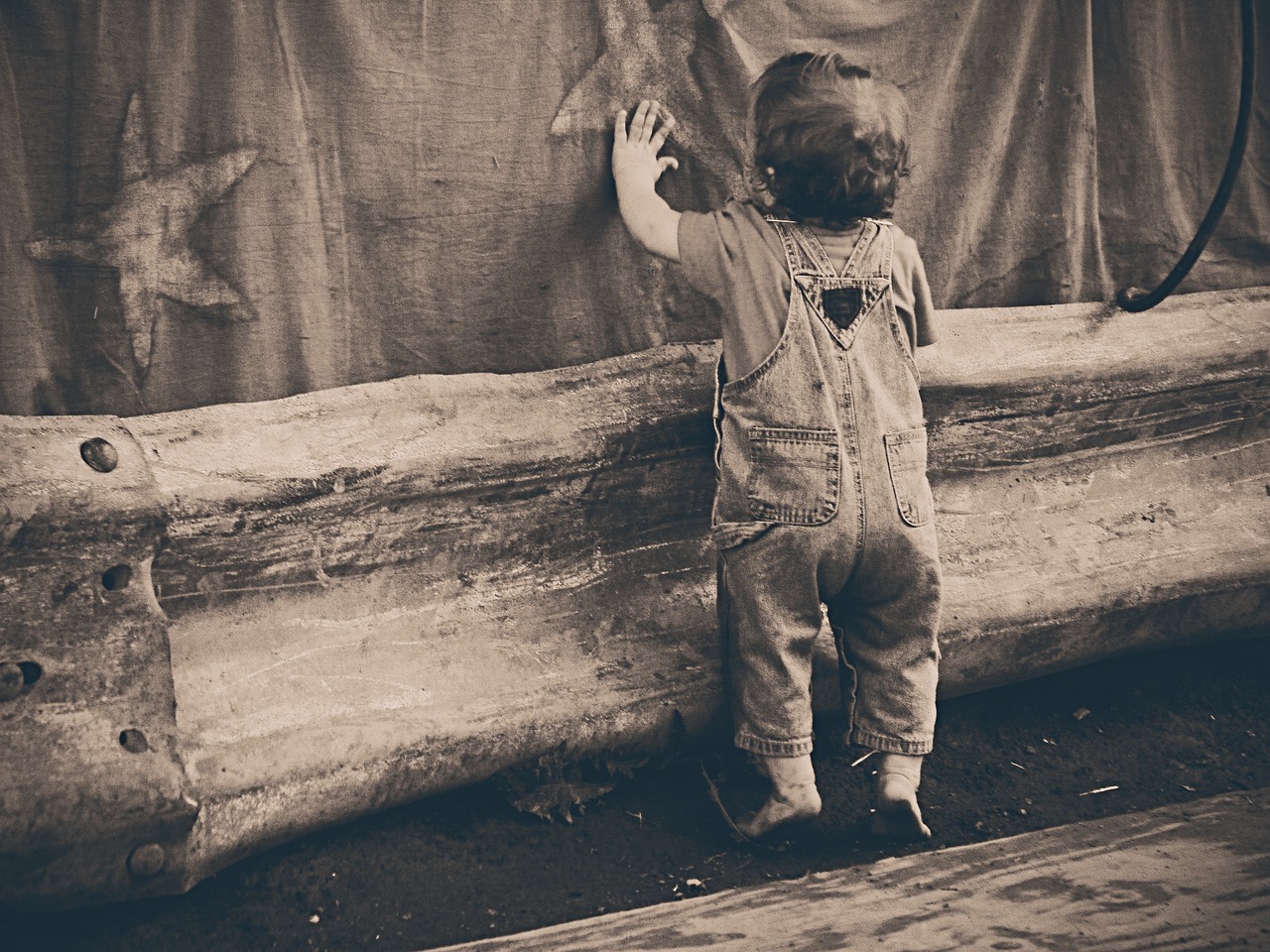Crafting For Kids: Exploring Geometric Shapes
Welcome to the vibrant world of geometric shapes! If you're a parent or a teacher looking for ways to engage children in creative activities, you've stumbled upon the right article. Crafting with geometric shapes is not just about creating pretty objects; it’s a fantastic way to ignite kids' imaginations while teaching them essential skills. Imagine your little ones transforming simple shapes like circles, squares, and triangles into magnificent art pieces. Sounds fun, right? In this article, we will dive deep into the exciting realm of crafting with geometric shapes, exploring various activities that enhance creativity, improve cognitive skills, and foster a love for learning in a playful way. So grab your scissors, glue, and colorful papers, and let’s get crafting!
Geometric shapes are the building blocks of art and design, and they come in many forms. From the classic circle to the edgy triangle, each shape has unique properties that make it special. For instance, circles have no corners and are all about smoothness, while squares have equal sides and right angles, making them perfect for creating structures. Kids encounter these shapes everywhere—in playgrounds, buildings, and even in nature! By recognizing shapes in their environment, children can develop a deeper understanding of the world around them. This foundational knowledge not only makes them better artists but also enhances their problem-solving skills, as they learn to identify and manipulate these shapes in various contexts.
Engaging in shape-based crafts is more than just a fun pastime; it offers a plethora of benefits for children. Crafting activities stimulate cognitive skills, improve fine motor skills, and encourage creative expression. When children work with shapes, they learn to recognize patterns and develop critical thinking skills. Have you ever watched a child try to fit a triangle into a square hole? That moment of realization is priceless! It’s all about trial and error, which fosters resilience and adaptability. Moreover, crafting with shapes can significantly boost their imagination. By manipulating shapes, kids can create anything from fantastical creatures to intricate designs, allowing their creativity to soar.
One of the most significant advantages of crafting with geometric shapes is the enhancement of spatial awareness. Spatial awareness refers to how we perceive and interact with objects in space. When children cut, glue, and arrange shapes, they begin to understand dimensions, distances, and relationships between objects. This skill is crucial not only in art but also in subjects like math and science. For instance, when a child builds a model using different shapes, they are learning about balance, symmetry, and proportion—all fundamental concepts in geometry.
Here are some engaging activities that promote spatial skills through shape-based crafts:
- Shape Collage: Have kids cut out various shapes from colored paper and create a collage. Encourage them to arrange the shapes in different patterns and discuss the spatial relationships between them.
- Shape Building: Provide children with building blocks or clay and challenge them to construct 3D shapes. This hands-on activity will enhance their understanding of volume and structure.
- Shape Puzzles: Create puzzles using geometric shapes. Children can learn about fitting shapes together while developing problem-solving skills.
Incorporating games into crafting can make learning about shapes even more enjoyable. Here are some fun game ideas:
- Shape Scavenger Hunt: Organize a scavenger hunt where kids find objects in the shape of circles, squares, and triangles around the house or yard.
- Shape Bingo: Create bingo cards with different geometric shapes. As you call out the shapes, kids can mark them on their cards, reinforcing recognition.
- Shape Matching Game: Use cards with different shapes and have kids match them with corresponding objects or drawings.
Crafting with geometric shapes is a powerful way to encourage children to think outside the box. These activities stimulate their imagination and allow for creative expression. When kids are free to experiment with shapes, they can create anything from abstract art to functional items like toys or decorations. It’s like giving them a blank canvas where their only limit is their imagination! The beauty of shape crafting is that there are no right or wrong answers; every creation is unique, just like the child who made it. This freedom in crafting can lead to increased self-esteem and a sense of accomplishment.
Choosing the right materials is crucial for successful crafting. Here’s a list of recommended materials for various geometric shape projects suitable for kids:
- Colored Paper: A variety of colors will inspire creativity.
- Scissors: Safety scissors for younger children.
- Glue: Non-toxic glue sticks or liquid glue.
- Markers and Crayons: For adding personal touches to their creations.
Using recyclable materials in crafting is not only eco-friendly but also a cost-effective way to create. Everyday items like cardboard boxes, bottle caps, and old magazines can be transformed into exciting geometric shape crafts. Encourage your kids to collect these items and see what amazing creations they can come up with!
Safety is paramount when crafting with children. It’s essential to use tools and supplies that make crafting enjoyable and secure. Always opt for child-safe scissors and non-toxic adhesives. Supervise younger children during crafting sessions to ensure they use tools correctly and safely. By creating a safe crafting environment, you allow kids to explore their creativity without worry.
Q: What age is appropriate for shape crafting?
A: Shape crafting can begin as early as age 3, with simple activities. As children grow, you can introduce more complex projects.
Q: How can I encourage my child to be creative with shapes?
A: Provide a variety of materials and allow them the freedom to explore and create without strict guidelines.
Q: Are there any online resources for shape crafting ideas?
A: Yes! Many websites and social media platforms offer a wealth of ideas and tutorials for shape-based crafts.

Understanding Geometric Shapes
This article delves into the exciting world of geometric shapes through crafting activities designed for kids, fostering creativity and learning while having fun.
Geometric shapes are the building blocks of our visual world. From the simple circle to the complex hexagon, these shapes are everywhere, influencing art, architecture, and even nature. Understanding these shapes is not just about recognizing them; it's about appreciating their properties and how they relate to one another. For instance, did you know that a triangle can have different forms, such as equilateral, isosceles, and scalene? Each of these triangles has unique characteristics that make them special. Just like people, shapes have their own identities!
In everyday life, we encounter geometric shapes in a variety of contexts. Think about the windows in your house, the tiles on the floor, or even the books on your shelf. Each of these items can be categorized based on their geometric properties. For example, windows are often rectangular, while tiles can be square or even circular. This understanding not only enhances our visual literacy but also helps children make connections between the shapes they see and the shapes they create.
Moreover, geometric shapes can be classified into two main categories: 2D shapes and 3D shapes. Two-dimensional shapes, like squares and circles, have length and width but no depth. On the other hand, three-dimensional shapes, such as cubes and spheres, have depth, adding a whole new layer of complexity. To illustrate this, take a look at the following table:
| Type of Shape | Examples | Properties |
|---|---|---|
| 2D Shapes | Circle, Square, Triangle | Length and width |
| 3D Shapes | Cube, Sphere, Cylinder | Length, width, and depth |
Understanding these shapes is not just an academic exercise; it’s a gateway to creativity. When kids learn about geometric shapes, they start to see the world in a new light. They begin to notice patterns, symmetry, and how shapes can combine to form something entirely new. For example, a child might take a circle and a triangle and create a fun character, like a house or a rocket ship! This kind of imaginative play is essential for cognitive development.
In crafting, recognizing shapes allows children to experiment and innovate. They can mix and match different shapes to create unique designs, fostering a sense of accomplishment and pride in their creations. So, the next time your child picks up some paper and scissors, encourage them to explore the shapes they can make. Who knows? They might just create the next masterpiece!

Benefits of Crafting with Shapes
Crafting with geometric shapes is not just a fun way to spend time; it also provides a myriad of benefits that can significantly enhance a child's development. When kids engage in shape-based crafts, they are not just creating art; they are also honing essential skills that will serve them well throughout their lives. Imagine a world where learning is seamlessly integrated with fun—this is what crafting with shapes offers!
One of the most notable benefits is the enhancement of cognitive skills. As children manipulate different shapes, they begin to understand the properties of each shape, such as the number of sides, angles, and how they can fit together. This hands-on experience solidifies their understanding of geometry, making it easier for them to grasp more complex mathematical concepts later on. Furthermore, this activity encourages critical thinking. Kids often face challenges while crafting, such as figuring out how to make a shape fit or what colors to choose, which promotes problem-solving skills.
Additionally, crafting with shapes plays a crucial role in improving fine motor skills. The act of cutting, gluing, and assembling shapes requires precision and control, which are vital for tasks like writing and typing. As children practice these skills, they are developing the hand-eye coordination necessary for everyday activities. Think of it as a workout for their little fingers! Just like athletes train to improve their performance, kids can enhance their dexterity through crafting.
But that's not all—crafting also encourages creativity and imagination. When kids are given geometric shapes, they can create anything from simple designs to complex structures. This freedom of expression allows them to explore their artistic side and think outside the box. They might start with a triangle and end up creating a rocket ship or a castle! The possibilities are endless, and this kind of imaginative play is crucial for their emotional and intellectual growth.
Moreover, engaging in shape-based crafts can lead to improved social skills. When children craft together, they learn to communicate their ideas, share materials, and collaborate on projects. This interaction fosters teamwork and helps them develop interpersonal skills that are essential for their future. Whether it's working on a group project or simply sharing supplies, crafting provides a platform for kids to connect with their peers in a meaningful way.
In summary, the benefits of crafting with shapes extend far beyond the final product. From enhancing cognitive and fine motor skills to fostering creativity and social interaction, these activities are a treasure trove of developmental advantages. So, the next time you see your child doodling with shapes, remember that they are not just playing; they are building a foundation for a brighter future!

Enhancing Spatial Awareness
When it comes to crafting with geometric shapes, one of the most significant benefits is the enhancement of spatial awareness in children. Spatial awareness is the ability to understand and interact with the space around us. It’s like having a mental map that helps us navigate our environment. Imagine trying to fit a square block into a round hole; it’s a classic example of spatial reasoning in action! Through various crafting activities, kids learn to visualize and manipulate shapes, which not only boosts their creativity but also sharpens their cognitive skills.
Engaging with geometric shapes allows children to explore concepts like size, dimension, and orientation. For instance, when a child is tasked with creating a 3D model using cubes and pyramids, they must think critically about how these shapes fit together in space. This hands-on experience is invaluable; it’s akin to playing with building blocks, where each piece must connect in a way that makes sense. As they work on these projects, children develop a deeper understanding of how shapes relate to one another and the spatial relationships that exist between them.
Moreover, crafting with shapes can also improve a child’s ability to visualize objects from different angles. Have you ever noticed how some kids can easily rotate a shape in their minds while others struggle? This skill, known as mental rotation, is crucial for many everyday tasks, from packing a suitcase to navigating a map. By encouraging kids to manipulate shapes during crafting, we are effectively training their brains to become more adept at visualizing and understanding the world around them.
To further illustrate the importance of spatial awareness, consider the following benefits:
- Problem-Solving Skills: Crafting with shapes often involves trial and error, which teaches kids how to approach problems creatively.
- Mathematical Understanding: Recognizing shapes and their properties lays the groundwork for future math skills, including geometry.
- Confidence in Learning: As children successfully complete shape-based crafts, they gain confidence in their abilities, encouraging them to take on more complex challenges.
In conclusion, enhancing spatial awareness through geometric shape crafting is not just about fun and games; it’s a vital part of a child’s development. By incorporating these activities into their playtime, we are equipping them with essential skills that will benefit them academically and in everyday life. So, the next time you see a child engrossed in crafting, remember that they’re not just creating art—they’re building a foundation for a brighter future!

Activities for Spatial Development
Engaging children in activities that focus on spatial development through geometric shapes can be both fun and educational. One of the most exciting ways to achieve this is by incorporating hands-on crafting projects that stimulate their understanding of space, dimensions, and relationships between different shapes. For instance, creating a 3D geometric structure using cardboard or paper can help children visualize how shapes fit together in a three-dimensional space. Imagine them building a pyramid or a cube—this not only enhances their spatial reasoning but also gives them a sense of accomplishment as they see their creations come to life.
Another fantastic activity is the shape scavenger hunt. This can be done indoors or outdoors, where kids are tasked with finding various geometric shapes around them. For example, they might look for circles in the wheels of their toys or triangles in the roof of a house. This activity not only reinforces their shape recognition skills but also encourages them to observe the world around them more closely. You can spice things up by providing a checklist of shapes to find, making it feel like a treasure hunt!
Additionally, consider incorporating puzzles and building blocks into your crafting sessions. These tools are excellent for teaching children about spatial relationships and problem-solving. As they manipulate the pieces, they learn how different shapes can combine to create new forms. You could set challenges, such as asking them to build a specific structure or replicate a shape using blocks, which can lead to hours of engaging play.
To further enrich these activities, you can introduce art projects that involve shape collages. Provide children with various cutouts of geometric shapes and let them arrange and glue them on paper to create a unique piece of art. This not only fosters creativity but also allows them to explore how different shapes interact with one another on a flat surface, enhancing their understanding of two-dimensional space.
Incorporating technology can also be a game-changer. There are numerous educational apps and online games focused on geometric shapes and spatial reasoning. These digital tools can complement physical crafting activities, providing a well-rounded approach to learning. Children can engage with interactive games that challenge them to solve spatial puzzles or identify shapes in different contexts, making learning dynamic and exciting.
In summary, there are countless ways to engage children in activities that develop their spatial awareness through geometric shapes. From hands-on crafting projects to interactive games, each activity not only makes learning enjoyable but also equips them with essential skills that will benefit them in their educational journey. So, grab those materials and let the adventures in shape crafting begin!
Q1: What age group is best suited for shape crafting activities?
A1: Shape crafting activities are suitable for children aged 3 and above, as they can be tailored to different skill levels. Younger kids can work with basic shapes, while older children can engage in more complex projects.
Q2: Are there any specific materials I should avoid?
A2: Yes, avoid small items that could pose a choking hazard for younger children. Always supervise crafting sessions and choose materials that are non-toxic and safe for kids.
Q3: How can I make shape crafting more challenging for older kids?
A3: Introduce more complex geometric shapes, encourage them to create intricate designs, or incorporate mathematical concepts like symmetry and angles into the projects.
Q4: Can shape crafting activities be integrated into school curriculums?
A4: Absolutely! Many educators use shape crafting as a fun way to teach geometry and spatial awareness in the classroom. It can be a hands-on supplement to theoretical learning.

Games to Encourage Shape Recognition
Engaging children in games that focus on shape recognition can be a delightful way to enhance their learning experience. These games not only make the process enjoyable but also provide a practical approach to understanding geometric shapes. Have you ever thought about how much fun learning can be? Imagine a world where kids are excited to identify shapes while playing games! It’s like turning a mundane lesson into an exhilarating adventure.
One popular game is the Shape Scavenger Hunt. In this activity, children are tasked with finding objects around the house or yard that match specific shapes. For example, they might look for a round ball, a square box, or a triangular slice of pizza. This game encourages them to observe their environment closely and reinforces their ability to recognize shapes in real life. Plus, it’s a fantastic opportunity for some physical activity!
Another fun game is Shape Bingo. Create bingo cards featuring various geometric shapes instead of numbers. As you call out the shapes, players will mark them on their cards. The first one to complete a row or the entire card shouts “Bingo!” This game not only sharpens their shape recognition skills but also promotes listening and concentration. It’s a great way to bring friends or family together for some friendly competition!
For those who enjoy a bit of creativity, consider the Shape Art Challenge. In this game, kids are given a set of geometric shapes cut out from colored paper. They can use these shapes to create a unique piece of art. This activity not only reinforces their understanding of shapes but also allows them to express their creativity. It’s like giving them a canvas to explore their imagination while learning!
To further enhance the learning experience, you might want to introduce a Shape Sorting Game. Gather a variety of shapes made from different materials—like plastic, wood, or cardboard—and have children sort them into groups based on their properties. This game can lead to discussions about the characteristics of each shape, such as the number of sides or angles, making it a rich educational experience!
Incorporating these games into your crafting sessions can make shape recognition a natural and enjoyable part of playtime. Not only do they promote learning, but they also foster teamwork and communication skills as children collaborate and share ideas. Who knew that learning about shapes could be so much fun? So, gather your materials, invite some friends, and let the shape games begin!
Q1: What age group is suitable for shape recognition games?
A1: Shape recognition games are suitable for children aged 3 to 8 years. However, older children can also enjoy modified versions of these games for reinforcement.
Q2: How can I adapt these games for children with different learning styles?
A2: You can adapt the games by incorporating visual aids, hands-on activities, and auditory instructions. For example, using music or songs related to shapes can engage auditory learners.
Q3: Are there any online resources for shape recognition games?
A3: Yes! There are numerous websites and apps that offer interactive shape recognition games that can be played on tablets or computers, providing a digital twist to traditional learning.
Q4: Can these games be played solo, or do they require multiple players?
A4: While many of these games are designed for multiple players, they can also be adapted for solo play. For instance, a child can play Shape Bingo by using a self-timer to call out shapes.

Fostering Creativity and Imagination
When it comes to crafting with geometric shapes, the possibilities are as limitless as a child's imagination. These activities not only help kids learn about shapes but also serve as a powerful medium for creative expression. Imagine a child picking up a simple triangle and transforming it into a vibrant mountain, or using circles to create a playful sun. Each shape becomes a building block for their thoughts, allowing them to explore their creativity in ways that structured activities often do not permit.
Through crafting, children can engage in a process that is both fun and educational. They can experiment with colors, textures, and forms, leading to unique creations that reflect their personality. For instance, when kids start combining various geometric shapes, they may discover new patterns and designs that spark further ideas. This exploration not only enhances their artistic skills but also encourages them to think critically about how shapes interact with one another.
Moreover, crafting with geometric shapes can be an excellent way to foster problem-solving skills. As children navigate the challenges of making their visions come to life, they learn to overcome obstacles and think outside the box. For example, if a child wants to make a star but only has triangles and squares, they might figure out how to arrange those shapes creatively to achieve their goal. This kind of thinking is crucial in developing a strong foundation for future learning.
Additionally, the act of creating can be incredibly therapeutic. It allows children to express their emotions and thoughts in a tangible way. When they work on a project, they can channel their feelings into their art, whether it’s joy, frustration, or excitement. The freedom to create without judgment fosters a safe space for self-expression, which is essential for emotional development.
To further enhance this imaginative journey, consider incorporating storytelling into shape crafting. Ask children to create a scene using geometric shapes and then narrate a story based on their creation. This not only stimulates their imagination but also helps them develop narrative skills and confidence in sharing their ideas. The combination of visual art and storytelling can lead to a rich, multi-dimensional learning experience.
In summary, crafting with geometric shapes is a fantastic way to foster creativity and imagination in children. It encourages them to explore, innovate, and express themselves freely. By providing them with the tools and materials to create, we can help unlock their potential and inspire a lifelong love for art and creativity.
- What age group is suitable for geometric shape crafting?
Geometric shape crafting can be enjoyed by children as young as 3 years old, with activities being tailored to suit various developmental stages.
- What materials do I need to start crafting with geometric shapes?
Basic materials include colored paper, scissors, glue, and markers. As children progress, you can introduce more complex materials like cardboard, fabric, and even recycled items.
- How can I encourage my child to be more creative during crafting?
Encourage open-ended projects where there are no right or wrong outcomes. Allow them to express their ideas freely and provide a variety of materials to stimulate their creativity.

Materials for Shape Crafting
When it comes to crafting with geometric shapes, the right materials can make all the difference. Not only do they enhance the crafting experience, but they also open up a world of creativity for children. Imagine a box full of colorful paper, scissors, glue, and a sprinkle of imagination! These materials can transform ordinary afternoons into extraordinary adventures in creativity.
First and foremost, paper is a must-have. You can use construction paper, origami paper, or even recycled paper from old magazines. Each type offers different textures and colors, which can ignite a child's creativity. For example, bright colored construction paper can be cut into various shapes, allowing kids to create vibrant pieces of art. The act of cutting, gluing, and assembling these shapes not only fosters creativity but also enhances fine motor skills.
Next up, we have cardboard. This versatile material can be used to create 3D geometric shapes. Think about how much fun it is to turn a simple cardboard box into a cube or a pyramid! Kids can paint, decorate, or even cover them with fabric, adding layers of creativity. Plus, using cardboard is an eco-friendly choice, teaching children the importance of recycling while they craft. It's like turning trash into treasure!
Another fantastic material is natural elements, such as sticks, leaves, and stones. These can be used to create unique geometric designs that connect children with nature. Imagine crafting a triangle using twigs or a circle with pebbles. This not only encourages creativity but also helps kids appreciate the beauty of the natural world. It’s a wonderful way to blend art with environmental awareness.
To enhance the crafting experience, consider incorporating tools that are safe and easy for kids to use. Scissors with rounded edges, glue sticks, and washable markers are perfect choices. They allow children to express their creativity without the worry of sharp objects or messy spills. Always remember, safety should be a priority, so it's crucial to supervise children while they use these tools.
Finally, don't forget about recyclable materials. Items like bottle caps, old buttons, and fabric scraps can be repurposed into geometric shapes. Not only does this encourage creativity, but it also teaches kids about sustainability. They can create a mosaic using bottle caps or a collage with fabric scraps, showcasing their artistic flair while being environmentally conscious.
In summary, the materials you choose for shape crafting can significantly impact the creative process. By providing a variety of options, you allow children to explore their imagination and develop new skills. Whether it's paper, cardboard, natural elements, or recyclable materials, each item opens up endless possibilities for fun and learning. So gather your supplies, unleash your creativity, and get ready for a crafting adventure!
- What are the best materials for shape crafting?
The best materials include colorful paper, cardboard, natural elements, and recyclable items. These materials are versatile and encourage creativity.
- Are there safe tools for kids to use?
Yes! Look for rounded-edge scissors, glue sticks, and washable markers to ensure safety while crafting.
- How can I incorporate recycling into shape crafting?
You can use items like bottle caps, old buttons, and fabric scraps to create unique geometric shapes, promoting sustainability.

Recyclable Materials
When it comes to crafting with kids, using not only sparks creativity but also teaches valuable lessons about sustainability. Imagine transforming a simple cardboard box into a vibrant geometric masterpiece! By incorporating everyday items that would otherwise end up in the trash, children can engage in hands-on learning while embracing their artistic flair. This practice not only nurtures their imagination but also instills a sense of environmental responsibility.
Some fantastic recyclable materials to consider include:
- Cardboard: Perfect for creating 3D shapes, cardboard can be cut, painted, and glued to form anything from pyramids to cubes.
- Paper Plates: These can be turned into circular shapes or even colorful masks, providing a fun canvas for kids to express their creativity.
- Egg Cartons: Ideal for crafting intricate designs, egg cartons can be transformed into flowers, animals, or geometric figures with a bit of paint and imagination.
- Plastic Bottles: With a little cutting and decorating, plastic bottles can become geometric sculptures or even planters, making them a versatile crafting material.
Using these materials allows children to see the potential in what might be considered waste. It's like giving a second life to objects that would otherwise be discarded! Plus, crafting with recyclable materials can be a fun challenge that encourages kids to think critically about how to use what they have creatively.
In addition to fostering creativity, working with recyclable materials can lead to exciting discussions about environmental conservation. As kids engage in crafting, you can introduce concepts such as recycling, reusing, and reducing waste. This not only enhances their crafting experience but also empowers them to become more mindful of their impact on the planet.
So, the next time you're preparing for a crafting session, take a look around your home. You might be surprised at the treasures you can find in your recycling bin! From old newspapers to plastic containers, the possibilities are endless. Encourage your little ones to explore their surroundings and see what they can repurpose into their next geometric creation.
Q: What are some other recyclable materials I can use for crafting?
A: In addition to cardboard and egg cartons, consider using items like toilet paper rolls, old magazines, and fabric scraps. The more variety, the more creative the projects can become!
Q: Are there any safety concerns when using recyclable materials for crafts?
A: Always supervise children when using scissors or sharp objects to cut recyclable materials. It’s also important to ensure that any materials used are clean and free from harmful substances.
Q: How can I encourage my child to think creatively with recyclable materials?
A: Challenge them to create something specific, like a geometric shape, but allow them to choose the materials and design. Encourage brainstorming sessions where they can share ideas and inspire each other!

Safe Tools for Kids
When it comes to crafting with kids, safety should always be the top priority. Using the right tools can make a world of difference in ensuring that children can express their creativity without any unnecessary risks. So, what are some of the safest tools to have on hand? Let's dive into a few essential items that not only keep your little ones safe but also enhance their crafting experience.
First and foremost, child-safe scissors are a must-have. Unlike regular scissors, these are designed with rounded tips and are often made from plastic, which minimizes the risk of cuts and injuries. They may not be as sharp as adult scissors, but they are perfect for little hands that are just learning to cut. It's like giving them a magic wand that transforms paper into their imaginative creations!
Next on the list are washable markers and crayons. These are not only safe for young artists but also easy to clean up. The last thing you want is a permanent reminder of their crafting session on your dining room table! Washable products allow kids to explore their artistic side freely, knowing that any mess can be easily wiped away. Think of them as the easy-to-erase mistakes in the world of art!
Another fantastic tool is non-toxic glue. Whether it’s glue sticks or liquid glue, choosing non-toxic options ensures that if a little bit ends up on their fingers (or even in their mouths), it won’t pose any health risks. It’s like giving them the freedom to build and create, all while keeping their safety in mind. Just imagine the joy on their faces as they stick together their favorite shapes!
Finally, consider investing in a crafting mat. Not only does it provide a safe and clean surface for kids to work on, but it also protects your furniture from glue spills and marker stains. It’s like setting up a little crafting zone where creativity can flow without any worries. Plus, it’s easy to clean, making it a win-win situation!
In summary, equipping your crafting space with the right tools ensures that your kids can explore their creativity safely and effectively. Here’s a quick recap of the essential safe tools:
- Child-safe scissors
- Washable markers and crayons
- Non-toxic glue
- Crafting mat
By providing these safe tools, you’re not just facilitating their artistic endeavors; you’re also instilling a sense of confidence in them. Crafting becomes an adventure where they can freely express their ideas while knowing they are in a secure environment. So gather those tools, get creative, and watch as your child's imagination takes flight!
Q: What age is appropriate for kids to start crafting with scissors?
A: Generally, children can start using child-safe scissors around the age of 3, but always supervise them to ensure safety.
Q: How can I ensure my crafting materials are safe for my child?
A: Look for products labeled as non-toxic and suitable for children. Always read labels and choose items designed specifically for kids.
Q: What should I do if my child accidentally ingests a crafting material?
A: If your child ingests any crafting material, contact your local poison control center or seek medical attention immediately.
Q: Are there any crafting activities suitable for toddlers?
A: Yes! Simple activities like finger painting or using large, soft building blocks can be great for toddlers, ensuring they have fun while being safe.
Frequently Asked Questions
- What are geometric shapes?
Geometric shapes are the building blocks of many things we see in art and design. They include basic forms like circles, squares, triangles, and more complex shapes. Understanding these shapes helps kids recognize patterns and structures in their environment.
- How can crafting with shapes benefit my child?
Crafting with geometric shapes can significantly enhance your child's cognitive and motor skills. It promotes creativity, improves fine motor skills, and even boosts spatial awareness. Plus, it’s a fun way for them to learn while creating something unique!
- What activities can help develop spatial awareness?
Activities like building with blocks, creating shape collages, or playing with shape puzzles can greatly help in developing spatial awareness. These activities encourage kids to think about how shapes fit together and how they occupy space.
- Are there any games that can help with shape recognition?
Absolutely! Games like shape scavenger hunts, shape bingo, or even simple matching games can make learning about shapes exciting. These interactive games keep kids engaged and reinforce their understanding of different shapes.
- What materials are best for shape crafting?
Using a variety of materials can enhance the crafting experience. Recommended materials include colored paper, cardboard, scissors, glue, and even recyclable items like bottle caps or cardboard boxes. These materials inspire creativity while being safe and accessible.
- How can I ensure the crafting tools are safe for my child?
Always choose age-appropriate tools and supplies. For younger kids, look for safety scissors, non-toxic glue, and washable markers. Supervision is key, so ensure you’re there to guide them through the crafting process.
- Can we use recyclable materials for crafting geometric shapes?
Definitely! Recyclable materials are not only eco-friendly but also provide a fantastic opportunity for creativity. Items like old magazines, cardboard boxes, and plastic containers can be transformed into amazing geometric shape projects!



















